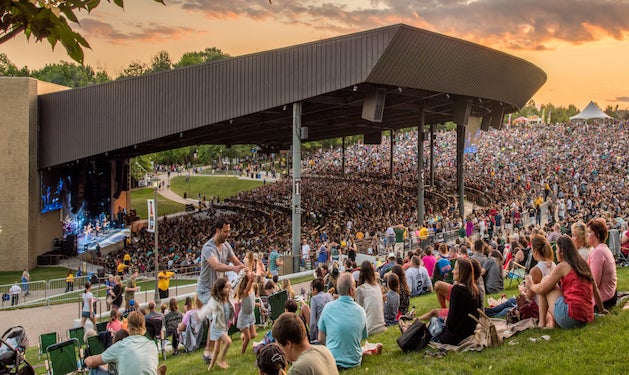Hendrix in the Heat: The May 1968 Miami Pop Festival
Oral History Intern Jarrett Hill discusses 1968's Miami Pop and Underground Festival, "where the seeds of Woodstock were sewn."
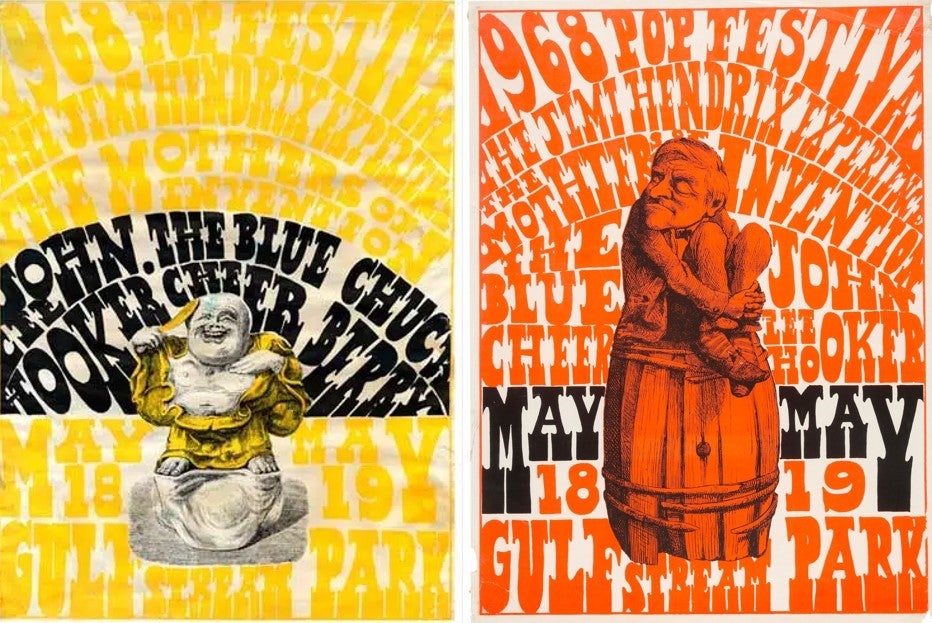
In late spring 1968, a festival unlike any the Southeast had seen before came to Miami. Capitalizing on the success of Miami's pioneering psychedelic rock venue Thee Image and the impassioned reception of the Grateful Dead's performance there on Easter Sunday that year, the 1968 Miami Pop and Underground Festival was the first festival of its size to emerge out of Coconut Grove, a Miami neighborhood with a rich countercultural presence that provided an oasis for many hippies in an otherwise stiflingly hot and stiflingly conservative atmosphere.
The 1968 Miami Pop and Underground Festival took place on May 18 and 19, 1968, in Hallandale, Florida. Staged at Gulfstream Park, a horse racing track north of Miami, an estimated 25,000 people attended. The festival was assembled in three weeks by future Woodstock organizer Michael Lang and Richard "Ric" O'Barry, a dolphin trainer and animal rights activist. O'Barry was known for his work on the popular family show Flipper. According to O'Barry, part of the festival's funding came from money he received working on the "aquatic Lassie." Lang had some connections to "The Grove's" countercultural scene from his local head shop, but to pull in someone with more experience programming music, Marshall Brevitz, owner of Thee Image and producer of the aforementioned Grateful Dead show, was brought on.[1]
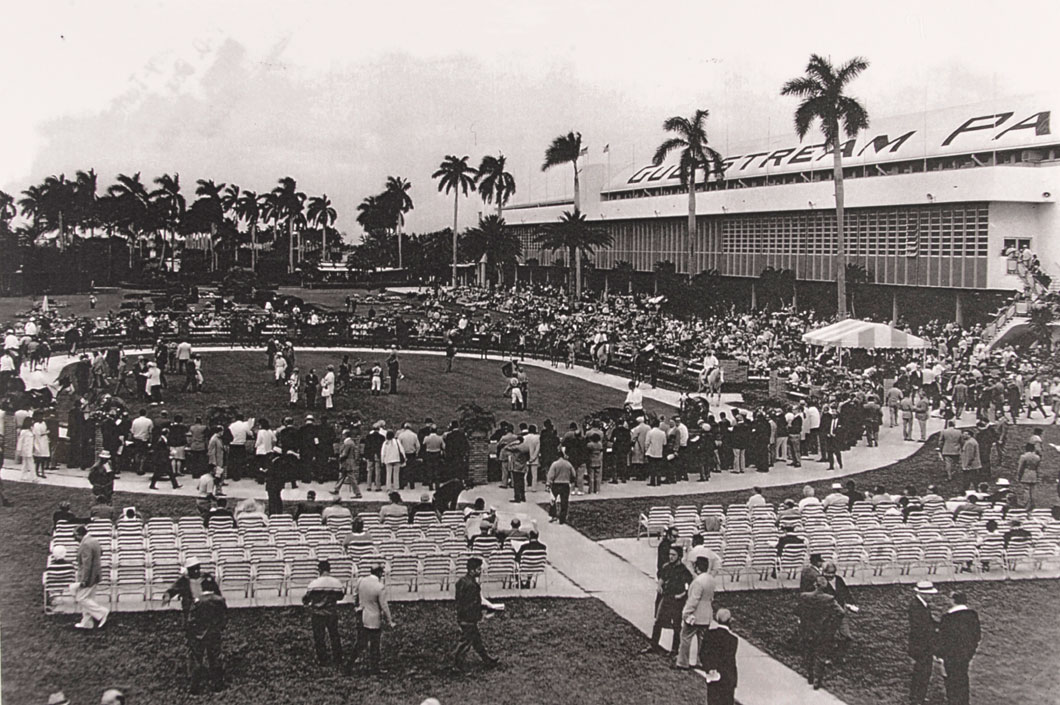
Officially publicized as the 1968 Pop and Underground Festival and as The 1968 Pop Festival, the event has become colloquially known as Miami Pop. This has led to some confusion amongst scholars of the counterculture, as Miami Pop was the official name of another festival that took place seven months later, in December 1968, with many of the same performers and in the exact same location. So, how can the events be told apart? The simplest way may be to remember the unique bands that performed at each. While Lang labeled May 1968's festival as "where the seeds of Woodstock were sown", December's Miami Pop was larger. It featured many iconic groups that never quite made it to Bethel.
So, if Jimi Hendrix is playing, that's the May Miami Pop. If Joni Mitchell or an early, Peter Green-fronted Fleetwood Mac is discussed, that's December.
Rainy Day, Dream Away
"As rain pelts the roofless stage, the crowd is turning ugly, with tempers rising as high as Miami's humidity. [...] I can't put any of the electric acts onstage, though a madman British vocalist announces that his band, the Crazy World of Arthur Brown, would like to perform and hopefully experience electrocution. "It would be beautiful!" he insists. I'm thinking the sight of Arthur frying would not be beautiful.
What we need is a powerful acoustic act.
Just as the rain subsides and the crew starts clearing water from the stage—a pair of flatbed trailers—I spot John Lee Hooker, cool as ever, smoking a cigarette, sitting backstage waiting for his slot. He's my man." -Michael Lang, The Road to Woodstock
The morning of Saturday, May 18th, seemed calm enough. No clouds gathered in the morning as three stages were constructed on top of flatbed trucks. Miami had been in drought for 30 days, but this would abruptly end. 40 miles to the Southwest, local government agencies flew into action, seeding clouds in the Everglades that would move up the East Coast of Florida and unleash long-awaited rainfall on Miami and the surrounding areas.[2] While it is certain that local farmers cheered the action on, one place did not celebrate, instead bracing for impact: Miami Pop.
In many ways, Miami Pop can be seen as the stepping stone between the trailblazing Monterey International Pop Festival of 1967 and the legendary Woodstock Music & Art Fair in 1969. Miami Pop borrowed a number of production strategies from Monterey Pop (such as filming the concert to create a subsequent festival film) that would later go on to be used at Woodstock. And, in a rare moment where history seems self-aware, Miami Pop foreshadowed many of the issues faced at Woodstock. Few events at Woodstock are discussed as often as the rains that drenched festival goers. Miami Pop was a test run of that, giving future Woodstock organizers experience with adapting a festival when rain delays performers and drenches participants.
As Miami Pop had been planned entirely within the span of Miami's 1968 drought, the organizers forewent expensive rain insurance. This presented an immediate issue when the first hints at the larger torrent to come began to shower down on Saturday's crowds. But Saturday's rains could barely put a damper on the crowd's enthusiasm: the event staff supposedly had to announce a false shark warning for the water near the stage in an attempt to keep fans a safe distance away.[3]
Rain wasn't the only thing descending from the skies during Woodstock and Miami Pop. Due to delays at both festivals, performers came down in helicopters, landing near the crowd to keep the show going. On the afternoon of May 18th, a lone helicopter sped from the nearby airport, descending onto the green of Gulfstream Park, delivering to Miami Pop its headliner—Jimi Hendrix.
Hendrix in the Heat
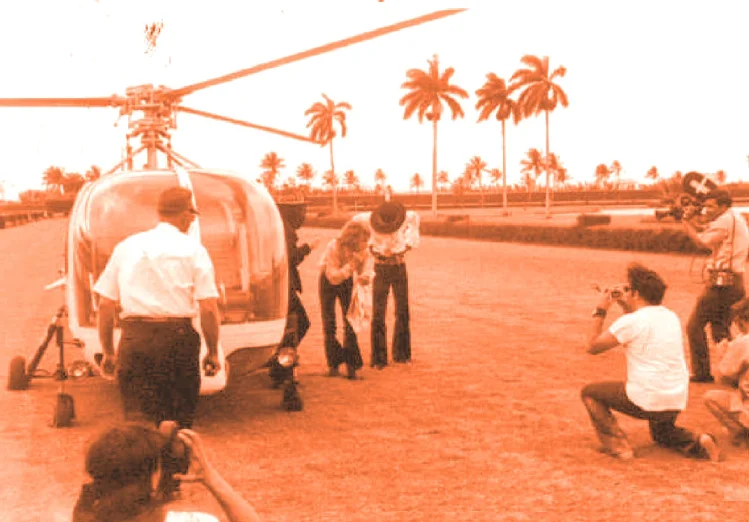
Perhaps the most well-remembered aspect of this festival is Hendrix's performance. Descending from the sky in a helicopter, Hendrix was the event's most anticipated act. Despite frequent interruptions from climatic conditions, The Jimi Hendrix Experience played what has since been labeled one of the best sets of its short career. Attendees and Hendrix hobbyists identify Miami Pop's "Purple Haze" as a remarkable live rendition with "outrageous improv."[4] Perhaps most special was the experience of this set for another legendary performer at the festival: Frank Zappa from The Mothers of Invention. At the end of Hendrix's set, Hendrix supposedly broke his Stratocaster guitar, doused it in lighter fluid, and set it ablaze before tossing the instrument off the stage. Zappa, having lingered after his performance earlier in the day, got to the guitar and extinguished the flame, later replacing the instrument's melted pickguard and broken neck. According to Zappa, he toured with this exact Stratocaster for years afterward.[5] It should be noted that many accounts of this story exist, with some claiming that Howard Parker, one of Hendrix's road crew, gifted the guitar to Zappa, while some Miami Pop attendees state Hendrix never even burned a guitar at the festival.[6]
Unfortunately, Hendrix could only perform a single set at the two-day festival, as the second day was largely rained out. Lang describes Sunday as "torrential downpours, hail, lightning, and fifty-mile-an-hour winds. Four inches of rain fell through the day and night." [7] This may have been disappointing for fans at the time, but one beam of light emerged through the dark clouds, with the cancellation inspiring Hendrix to write "Rainy Day, Dream Away," which he recorded upon returning to Electric Ladyland in New York City.
"Aw, don't worry 'bout that
Everything's gonna be everything
We'll get into somethin' real nice, you know
Sit back and groove on a rainy day."
-Jimi Hendrix, Rainy Day, Dream Away
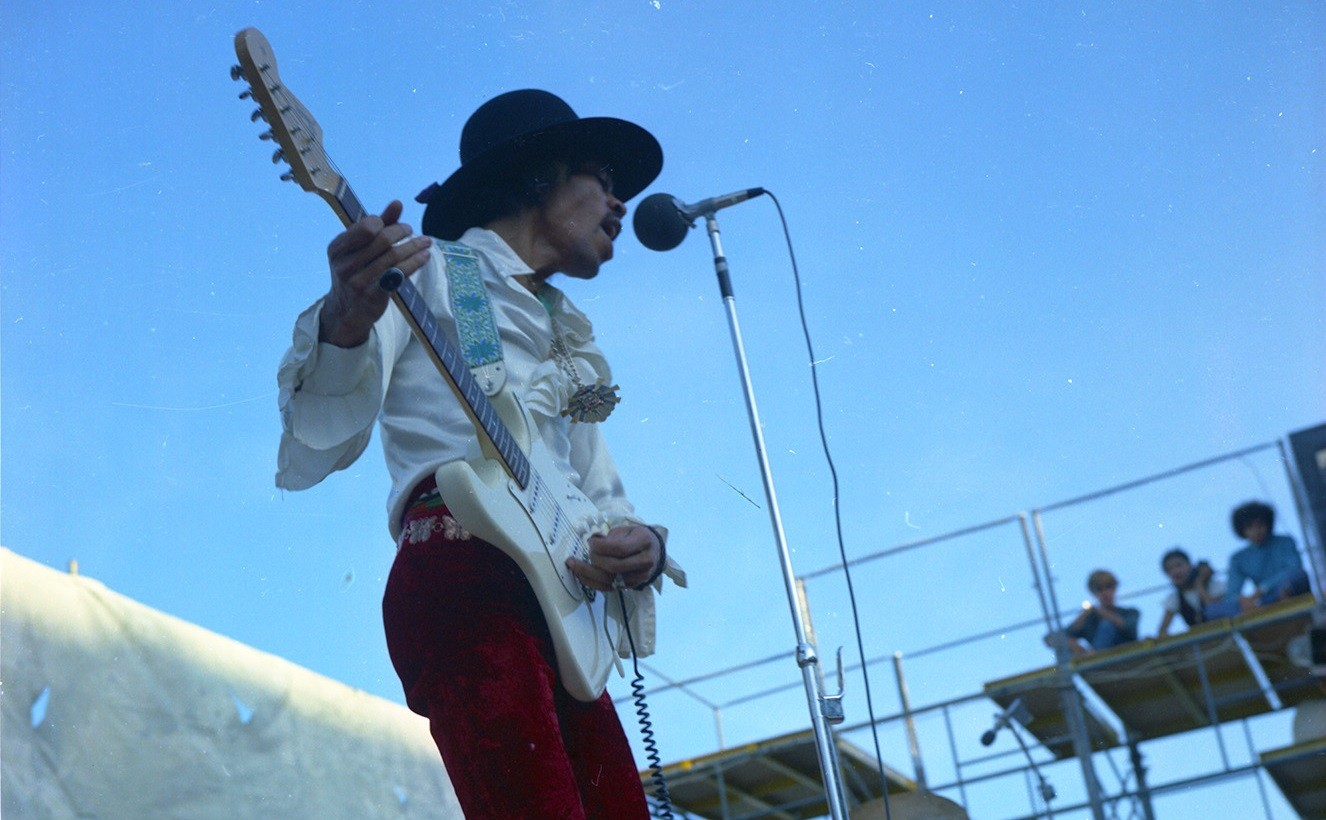
Local responses to the festival were divided, with some goodwill from the successes of Palm Beach and Miami-Dade County's well-received countercultural events dulling the edge of larger societal conservatism. Stances like the Miami Herald's, which warned that the influx of hippies would damage real estate values and lead to increased petty crimes, were combated with incredulous yet well-intentioned headlines like the Fort Lauderdale News's—"Flower Children Strangely Mannerly: Reporter Rubs Elbows With Weirdos." [8]
While recordings of the performances did not exist officially for many years, several floated around as bootleg recordings for decades among hippies and rock enthusiasts. This was Miami Pop's legacy in the long term, but the immediate impact of the festival was felt in a community that would, a little over a year later, gather together for three days in Bethel, NY. May 1968's Miami Pop gave future Woodstock organizers significant experience with the production of a music festival. They introduced many important figures in the Woodstock story, such as recording engineer Stanley Goldstein, Michael Lang, and Hendrix's sound engineer Eddie Kramer. So despite an unexpected storm cutting May's Miami Pop short, the festival paved yet another section of the long road to Woodstock.
[1]Michael Lang and Holly George-Warren, The Road to Woodstock (New York, NY: Ecco, 2010).
[2] Ibid.; Richard Pothier, “Cloud Seeders Separating Natural, Man-Made Rain,” The Miami Herald, May 22, 1968, 23.
[3] “Festival Fridays: The 1968 Miami Pop Festivals,” Record Crates United, June 21, 2019, https://recordcratesunited.com/2017/06/09/festival-fridays-the-1968-mia….
[4] Stephen K Peeples, “Jimi Hendrix Rocks Gulfstream: Reliving First Miami Pop Festival, 1968,” Stephen K. Peeples, August 23, 2020, https://stephenkpeeples.com/news-and-reviews/jimi-hendrix-rocks-gulfstr….
[5] Lang and Geroge-Warren, The Road to Woodstock.
[6] Dan Kopilovic, “Jimi Hendrix's 196? Fender Stratocaster (Frank Zappa),” Ground Guitar, August 10, 2022, https://www.groundguitar.com/jimi-hendrix-gear/jimi-hendrixs-1960s-fend….
[7] Lang and Geroge-Warren, The Road to Woodstock.
[8] Ibid.; Paul Schreber, “Hippies Unruffled By Fire,” Miami Herald, May 18, 1968, 64; Jack Chamberlain, “They’re Off ‘n’ Running, Man, To Way-Out Sound Marathon,” May 19, 1969, 89; Mark Hauser, “Reporter Rubs Elbows With Weirdos: Flower Children Strangely Mannerly,” Fort Lauderdale News, May 20, 1968, 6.
